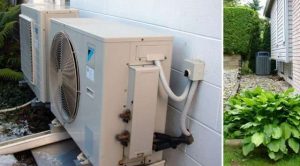Traditional Systems to High-Efficiency Heat Pumps – A Journey through Energy Savings
Transitioning from traditional heating systems to high-efficiency heat pumps marks a significant journey in energy savings and environmental impact. Traditional heating systems, typically powered by fossil fuels such as natural gas, oil, or coal, have long been the norm in many homes and businesses. These systems, while effective in providing warmth, are often energy-intensive and contribute substantially to greenhouse gas emissions. The inefficiency inherent in these older systems translates to higher energy bills and a larger carbon footprint. As global awareness of climate change and environmental sustainability has grown, the need for more energy-efficient and eco-friendly alternatives has become increasingly apparent. High-efficiency heat pumps represent a groundbreaking solution in the quest for more sustainable heating and cooling. Unlike traditional systems that generate heat through combustion, heat pumps work by transferring heat from one place to another. In the winter, they extract heat from the outside air, ground, or water and transfer it indoors. During the summer, the process reverses, and the heat pump acts as an air conditioner by moving heat from inside the building to the outside.

This method of heat transfer is inherently more efficient because it moves existing heat rather than creating it through the burning of fossil fuels. One of the most compelling benefits of high-efficiency heat pump efficiency chart is their potential for substantial energy savings. Because they use electricity to move heat rather than generate it, heat pumps can deliver up to three times more heating energy to a home than the electrical energy they consume. This translates to lower utility bills and a reduction in overall energy consumption. For homeowners, this means significant cost savings over time. For businesses, the reduced energy expenditure can lead to lower operating costs and an improved bottom line. In addition to cost savings, high-efficiency heat pumps offer notable environmental benefits. By reducing the reliance on fossil fuels, they help decrease the carbon emissions associated with traditional heating systems. This aligns with broader goals of reducing greenhouse gas emissions to combat climate change. Furthermore, many modern heat pumps use environmentally friendly refrigerants that have a lower impact on the ozone layer and contribute less to global warming compared to older refrigerants used in conventional HVAC systems.
The journey to adopting high-efficiency heat pumps also includes considerations of comfort and convenience. Heat pumps provide consistent and even heating and cooling, enhancing indoor comfort levels. They are also versatile and can be used in a variety of settings, from single-family homes to large commercial buildings. Advances in technology have made modern heat pumps more reliable and capable of operating efficiently even in colder climates, addressing earlier concerns about their performance in less temperate regions. The transition from traditional heating systems to high-efficiency heat pumps is not without its challenges and finds more info in this website www.jnodenergy.com. Upfront costs for purchasing and installing heat pumps can be higher than those for traditional systems. However, various incentives, rebates, and financing options are available to offset these initial expenses. Moreover, the long-term savings on energy bills and maintenance costs often justify the investment. Education and awareness are also crucial in driving adoption, as many consumers and businesses may not be fully aware of the benefits and capabilities of modern heat pump technology.